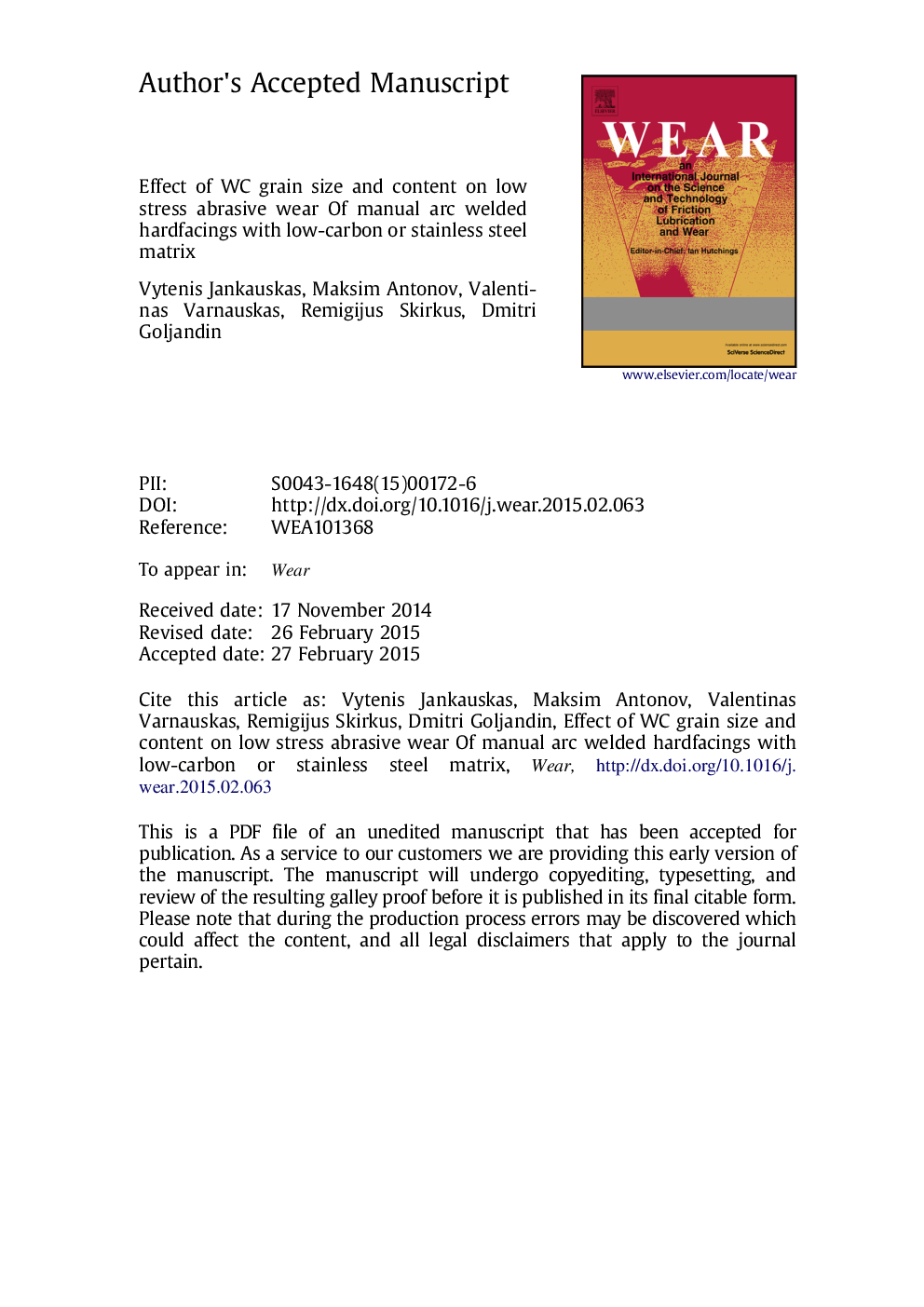| Article ID | Journal | Published Year | Pages | File Type |
|---|---|---|---|---|
| 7004420 | Wear | 2015 | 23 Pages |
Abstract
Abrasive wear resistance of tillage and harvesting tools is highly important for the agricultural sector because abrasive wear by hard soil particles is the main factor limiting their lifetime. Manual arc welding is among the easiest, most convenient, and economically feasible methods not only for coating metallic tools in small and medium scale farms, but also for mining operations. The aim of the current work was to develop electrodes for manual arc welding that enable a significant reduction of wear under three-body abrasive conditions. Reinforcement by tungsten carbide powder was used due to possibility of production these powders through recycling of hardmetal scrap. The effects of three variables, namely (1) binder material (low-carbon ferritic-pearlitic or austenitic stainless steel), (2) WC content, and (3) WC grain size, on three-body abrasive wear resistance of hardfacings, were evaluated using the ASTM G65, dry sand/rubber wheel, test method (Procedure B). A reduction in wear rate by as much as a factor of 9 was achieved by introducing of 42-43 wt% of WC. A discussion of the wear mechanisms for the hardfacings is provided, based on data and observations using scanning electron microscopy, energy dispersive spectroscopy, X-ray diffraction, and optical emission spectroscopy.
Related Topics
Physical Sciences and Engineering
Chemical Engineering
Colloid and Surface Chemistry
Authors
Vytenis Jankauskas, Maksim Antonov, Valentinas Varnauskas, Remigijus Skirkus, Dmitri Goljandin,
